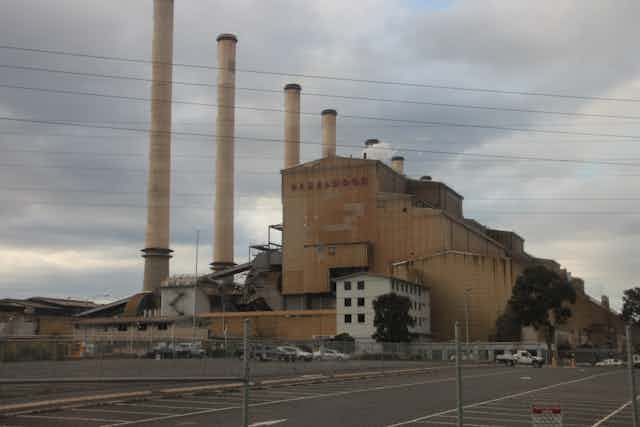Over the weekend Fairfax media reported that the Hazelwood power station in the Latrobe valley could close as early as next April. Senior management at Engie, the French company which is the majority owner of the brown coal-fired power plant, has emphasised that no decision has been made yet.
As was the case with the Northern Power station in South Australia, the imperative to close Hazelwood has evidently come from the company’s board.
Earlier this year, Engie, the majority owner of Hazelwood, flagged it was considering closing or selling the plant. But at this point, no timeline for closure was suggested. Now it seems that Engie is planning to make a decision on the future of the plant at its board meeting in October.
There are many factors that would be contributing to their deliberation. These include, but are not limited to, the plant’s age, changes in the electricity market, and an erosion of the social license to operate, courtesy of long running campaigns from environment groups such as Environment Victoria.
Commissioned in the late 1960s, the power plant is almost 50 years old and one of the oldest coal-fired power plants still operating in the National Electricity Market (NEM). Smaller coal plants of similar age have closed in recent years, including Playford B in South Australia and Anglesea and the Morwell Energy Bricks Complex in Victoria.
Increasing amounts of renewable energy, and expected future increases would also be weighing on decisions to close. As has been well documented, there has been be an oversupply of electricity capacity in recent years. This has the effect of lowering wholesale prices and is exacerbated by increasing renewable energy generation.
What is interesting about both the potential closure of Hazelwood and the closure of Northern and Playford in South Australia, is that these have occurred in the absence of schemes like the (failed) “contracts for closure” and ANU professor Frank Jotzo’s proposal for brown coal exit.
On the one hand, this is good news for taxpayers and consumers. To date, the companies that own these assets are not being paid to close. On the other hand, the decision is made at the company level, without consideration for local workers and communities.
What would replace Hazelwood’s output?
Hazelwood has historically generated about 11-12 terrawatt-hours of energy each year. This is approximately 20% of all energy generated in Victoria, and 5% of energy generated in the National Electricity Market.
Like other brown coal power stations, Hazelwood produces cheap electricity (if we ignore carbon emissions). As a result, these power stations are used a lot (on average at more than 80% of their total capacity) and Victoria is a significant net exporter of energy.
Victoria exported 8.5 terrawatt-hours of electricity in 2014-2015 and 7 terrawatt-hours in 2015-2016, representing about 70% of Hazelwood’s output. A large share of this (approximately 5 terrawatt-hours) flowed to New South Wales.
If Hazelwood closes, the flows might substantially change. Generation in New South Wales could be expected to increase.
New South Wales is dominated by black coal generation, which is slightly more expensive that brown coal, and currently is used relatively infrequently. Over the past five years, NSW’s black coal power stations have operated at approximately 50% of their total capacity on average.
The idle black coal capacity in NSW alone could more that replace the energy output of Hazelwood.
But coal and other fossil fuel generation is only part of the story. By 2020, a large amount of renewable generation will have to be built to fulfil the obligations of the national Renewable Energy Target.
And the Victorian government’s Renewable Auction Scheme will see 5,400 megawatts of new renewable energy built in Victoria alone by 2025. This 5,400 megawatts will produce approximately 30% more energy than is currently delivered by Hazelwood.
What about emissions?
Hazelwood is also the most emissions-intensive coal generator still in operation in Australia. In fact it was previously identified by WWF as the most emissions-intensive generator in the major industrialised nations.
Based on current emission intensity estimates, Hazelwood produces around 15 million tonnes of CO₂ emissions per year, approximately 2.8% of Australia’s emissions.
However, this does not represent the overall emissions impact in the short term. In a high emissions scenario, the output of Hazelwood might be entirely replaced by NSW black coal (assuming the remaining brown coal power stations cannot dramatically increase their output). In this case, the total emissions from the electricity sector might reduce by only 5.5 million each year.
So, while we don’t know whether Hazelwood will close yet, we do know that Australia could easily replace the energy, and it could make a substantial difference to our carbon emissions.
The Melbourne Energy Institute, the Grattan Institute, the EU Centre on Shared Complex Challenges, GEE-21, the Australian-German Climate and Energy College, and ATSE are holding a symposium on Australia’s Electricity System: Transition to 2030 this week.

